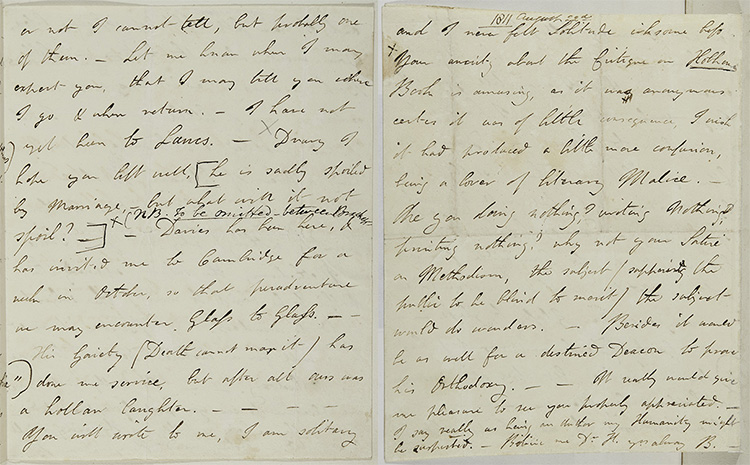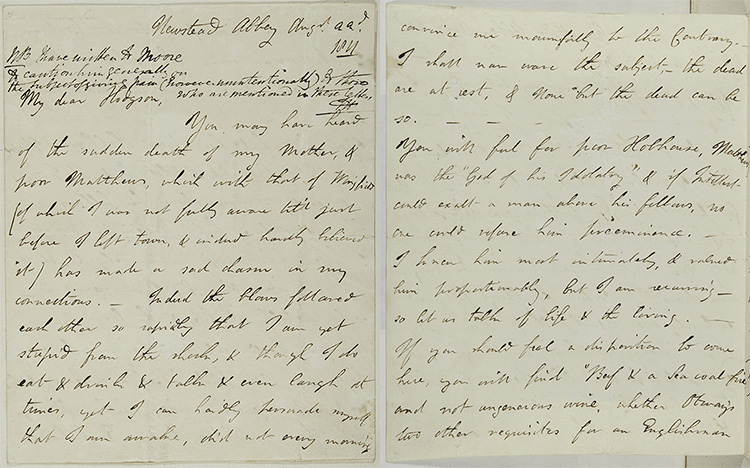Lord Byron to Canon Hodgson, 1811
In the next part of our series highlighting the Marseille Middleton Holloway autograph albums, gifted to the University Library a few years ago, we take a look at the letter from Lord Byron to Canon Hodgson in 1811.
George Gordon Byron (1788-1824), Lord Byron, was a Romantic poet and libertine, famous for his long narrative poems including Don Juan and Childe Harold’s Pilgrimage, and his Bacchanalian lifestyle. He achieved celebrity status through his scandals and excesses, and created the idea of a tragic Byronic hero in his own image. He embodied just such a heroic figure to the Greek nation by fighting for them against the Turks.
In this moving letter Byron writes to his old friend Canon Hodgson, his former tutor at Eton, to break the news of his mother’s death. This loss came very soon after the loss of his school friend John Wingfield, and also of fellow Cambridge student, Charles Skinner Matthews, who drowned in the Cam. Byron had just returned to England the previous month after two years on the continent pursuing the Grand Tour, and so would have seen little of his mother or friends in this time. This may contribute to his sense of desolation expressed in the letter, despite his own attempts at humour.

Although this letter was first published by Thomas Moore in his 1830 Life of Lord Byron, 2 lines were redacted to protect people then still living from personal remarks. See the editor’s note: ‘N.B. To be omitted between Brackets’. These lines have therefore been unknown for many years and are now revealed here:
’Drury I hope you left well, [he is sadly spoiled by Marriage, – but what will it not spoil?]’
Byron was bleakly aware of the negative effects of marriage on his former bachelor friends, a common shared lament in their correspondence. Byron’s own marriage ended in disaster within a year.
Later in the letter the name Hobhouse was deleted from the printed edition and so the letter is marked with a ‘X’ to indicate the required omission. It was published as ‘**’s’. This was a typical literary convention of the period, enabling the author to avoid criticism and accusations of inaccuracy.
